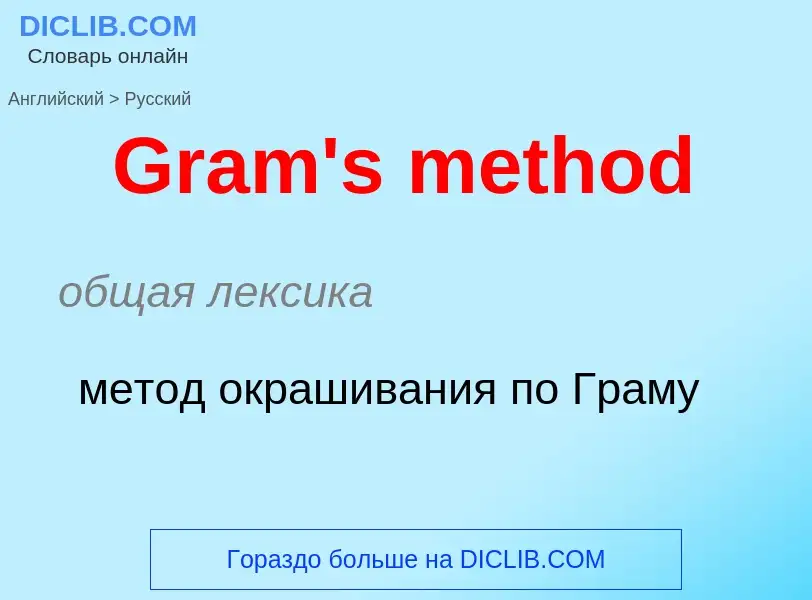Translation and analysis of words by ChatGPT artificial intelligence
On this page you can get a detailed analysis of a word or phrase, produced by the best artificial intelligence technology to date:
- how the word is used
- frequency of use
- it is used more often in oral or written speech
- word translation options
- usage examples (several phrases with translation)
- etymology
Gram's method - translation to russian
общая лексика
метод окрашивания по Граму
общая лексика
окрашивание по Граму
общая лексика
краситель Грама
Definition
Wikipedia

In microbiology and bacteriology, Gram stain (Gram staining or Gram's method), is a method of staining used to classify bacterial species into two large groups: gram-positive bacteria and gram-negative bacteria. The name comes from the Danish bacteriologist Hans Christian Gram, who developed the technique in 1884.
Gram staining differentiates bacteria by the chemical and physical properties of their cell walls. Gram-positive cells have a thick layer of peptidoglycan in the cell wall that retains the primary stain, crystal violet. Gram-negative cells have a thinner peptidoglycan layer that allows the crystal violet to wash out on addition of ethanol. They are stained pink or red by the counterstain, commonly safranin or fuchsine. Lugol's iodine solution is always added after addition of crystal violet to strengthen the bonds of the stain with the cell membrane.
Gram staining is almost always the first step in the identification of a bacterial group. While Gram staining is a valuable diagnostic tool in both clinical and research settings, not all bacteria can be definitively classified by this technique. This gives rise to gram-variable and gram-indeterminate groups.


![µm]] in diameter. µm]] in diameter.](https://commons.wikimedia.org/wiki/Special:FilePath/Candida Gram stain.jpg?width=200)
![Gram-stain of [[gram-positive]] [[streptococci]] surrounded by pus cells Gram-stain of [[gram-positive]] [[streptococci]] surrounded by pus cells](https://commons.wikimedia.org/wiki/Special:FilePath/Gram-positive bacteria and pus cells.jpg?width=200)
![Purple-stained [[gram-positive]] (left) and pink-stained [[gram-negative]] (right) Purple-stained [[gram-positive]] (left) and pink-stained [[gram-negative]] (right)](https://commons.wikimedia.org/wiki/Special:FilePath/Gram Staining Bacteria.jpg?width=200)
